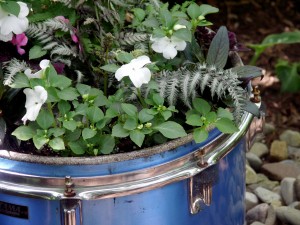Some junk is too old to save, too dirty to clean, or too unstable to put to good use. But what about the stuff that’s just, well, junky? The trend of upcycling has swept DIY blogs and home improvement stores, breathing new life into tired junk and unattractive antiques. While many upcycling trends simply result in new, artistic-looking garbage (coat hangers and trash bags are never attractive, no matter what colors you paint them), many of these decorating innovations make old, well-loved furniture stylish again. If you’re a craft-lover or a penny-pincher, here’s everything you need to know about the upcycling trend.
What is Upcycling?
 “Upcycling” sounds like a typical, modern eco-trend, but it’s not a new concept. Reiner Pilz coined the term in 1994 when he said, “Recycling . . . I call it downcycling. They smash bricks, they smash everything. What we need is upcycling—where old products are given more value, not less.” While recycling works for items that are no longer usable, revitalizing tired but workable items saves both money and resources. Upcycling is essentially adding value to items others deem worthless by fixing superficial problems or giving new uses to old things. The best upcyclers are people who see potential beyond surface-level problems like chipped paint or broken hinges. Upcycling can be as simple as painting a faded dresser or as innovative as making lawn furniture out of old tires.
“Upcycling” sounds like a typical, modern eco-trend, but it’s not a new concept. Reiner Pilz coined the term in 1994 when he said, “Recycling . . . I call it downcycling. They smash bricks, they smash everything. What we need is upcycling—where old products are given more value, not less.” While recycling works for items that are no longer usable, revitalizing tired but workable items saves both money and resources. Upcycling is essentially adding value to items others deem worthless by fixing superficial problems or giving new uses to old things. The best upcyclers are people who see potential beyond surface-level problems like chipped paint or broken hinges. Upcycling can be as simple as painting a faded dresser or as innovative as making lawn furniture out of old tires.
Why Upcycle?
Save money on new furniture
Teach your kids to think creatively
Encourage you to learn new skills
Conserve natural resources
Keep trash out of landfills
Do you have broken, unstable, or dirt-contaminated items that aren’t worth the investment of upcyling? Call Mr Junk to haul away old appliances, furniture, scrap metal, and yard equipment.



